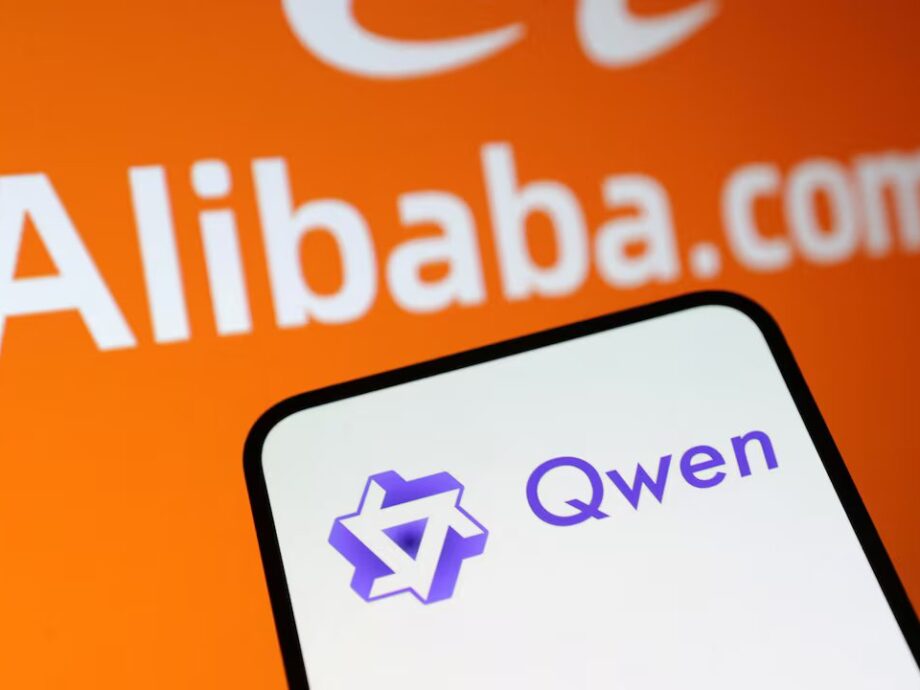A natively multimodal model arrives as open source
Alibaba Cloud unveiled Qwen3-Omni, a multimodal AI model that natively unifies text, images, audio, and video in one system. The release pushes the race in real time assistants into new territory by combining broad capabilities with an enterprise friendly open source license. The model accepts inputs across all four modalities, then responds as text or natural speech. It is available for free download, modification, and commercial deployment under Apache 2.0, a permissive license that includes a patent grant. The move positions Alibaba as a credible alternative to proprietary offerings from OpenAI and Google while giving developers full control over how and where the model runs.
- A natively multimodal model arrives as open source
- What sets Qwen3-Omni apart from GPT-4o and Gemini
- Inside the architecture
- Versions, languages, and context limits
- Benchmarks and how to read them
- What developers can build today
- Enterprise calculus and licensing
- Risks and responsible deployment
- How to get started
- Key Points
Qwen3-Omni arrives as part of the wider Qwen series of models that have steadily expanded in scope. The team says the new release was trained across large text corpora and vast audio and visual data, then refined to behave responsively in live conversations. It ships in three core variants that map to common needs. The Instruct model handles mixed inputs and can speak its answers. The Thinking model focuses on harder reasoning with long context. The Captioner specializes in audio captioning with low hallucination. Distribution spans the official GitHub repository, model hubs such as Hugging Face, and a hosted API with a faster Flash serving option. The late night launch also included a new Qwen3 TTS system and an image editing model, reflecting a push to ship a full stack around multimodal interaction.
Why this launch matters
Multimodal assistants are moving from demos to production workloads. Enterprises want a single model that can listen, watch, read, and reason in real time, then speak back with a natural cadence. Qwen3-Omni targets that exact use case. The combination of open access and claimed state of the art scores on a wide set of speech, audio, image, and video tests makes the announcement significant for buyers who need flexibility, price control, and on premises deployment.
What sets Qwen3-Omni apart from GPT-4o and Gemini
Competitors popularized the idea of omni models that can see, hear, and talk. OpenAI brought text, image, and audio under one roof with GPT-4o. Google extended analysis to video for Gemini 2.5 in some product tiers. Qwen3-Omni was built from the ground up as a single end to end stack for all four input types. The model supports video understanding like scene detection and event tracking, accepts still images and documents for OCR and grounding, listens for voice, and reads text. Responses are delivered as text or speech, which keeps output simple for live interactions while avoiding the complexity of image or video generation.
A key difference is availability. Qwen3-Omni is released under Apache 2.0, which allows enterprises to download the weights, run them on their own infrastructure, and fine tune behavior for specific sectors without negotiating licenses. Proprietary systems restrict self hosting or charge per token for every interaction. Another open model family from Google, Gemma, remains text only, so it does not cover the same multimodal scope. For teams that want to standardize on an open model across voice, vision, and text tasks, Qwen3-Omni fills a gap.
Speed for live conversations
Alibaba publishes theoretical first packet latency figures of about 234 milliseconds for audio and about 547 milliseconds for video. That range fits human expectations for turn taking and makes real time use plausible across geographies when paired with efficient streaming. Reported numbers are measured on internal systems, so production results will vary by hardware, concurrency, and network conditions. Even so, latency below one real time factor under load suggests the design is tuned for practical deployment.
Inside the architecture
The model follows a two part design that the team calls Thinker and Talker. The Thinker handles multimodal understanding and reasoning. It reads text, looks at pixels, and listens to audio features, then plans and composes content. The Talker focuses on speech, converting high level representations into natural voice for streaming replies. Separating these roles lets the speech stack move at its own cadence while the language model thinks ahead.
Both components use Mixture of Experts, a technique where many specialist sub networks are trained and only a few are activated for each token. This increases throughput for high concurrency without activating all parameters on every step. The speech pipeline uses a multi codebook autoregressive scheme that compresses audio into discrete codes. A lightweight Code2Wav convolutional network turns those codes into waveforms. The approach cuts delay while preserving timbre and prosody so speech sounds less robotic at low latency.
The Talker is decoupled from the Thinker’s text representations and conditions directly on audio and visual features. That choice helps the voice align with what is happening on screen in audio visual interactions. On the perception side, an Audio Transformer encoder was trained on roughly 20 million hours of supervised audio. Pretraining proceeds in stages. The team aligns encoders, trains on around two trillion tokens spanning text, audio, images, and video, then extends context for long sessions. Post training adds supervised fine tuning, distillation, and optimization passes for both the Thinker and the Talker.
Versions, languages, and context limits
Qwen3-Omni arrives as Qwen3-Omni-30B-A3B in three public variants. The Instruct model accepts audio, video, and text inputs, then outputs text and speech. The Thinking model targets hard reasoning, mathematical steps, and planning with text output. The Captioner is tuned for audio captioning in detail. A hosted Flash option aims for faster interactions through Alibaba Cloud.
Multilingual reach is a focus. The base model supports 119 languages in text, 19 for speech input, and 10 for speech output, including widely used dialects like Cantonese. That balance can simplify global deployments where voice experiences need to adapt to local accents and scripts.
Sessions can be long. Thinking Mode offers context windows up to 65,536 tokens. Non Thinking Mode reaches 49,152. Maximum input and output are set at 16,384 tokens. For complex reasoning, the longest chain can stretch to 32,768 tokens. The API uses token based billing per 1,000 tokens with separate rates for text, audio, and image or video inputs, and for text or audio outputs. New accounts receive a free quota of one million tokens across modalities for ninety days after activation.
Benchmarks and how to read them
Alibaba reports results across 36 benchmarks that cover text and reasoning, speech and audio, image and vision, and audio visual video tasks. According to the company, Qwen3-Omni achieves state of the art scores on 22 tests and leads open source models on 32. The team also says it outperforms GPT-4o and Gemini 2.5 Pro on many audio and audio visual evaluations. Categories include speech recognition, audio understanding, audio visual question answering, video description, and voice generation. In text heavy tasks, the model reportedly matches members of the Qwen text family.
Benchmarks are a guide, not a guarantee. Test suites vary in scope, instruction formats, and scoring rules. Vendors choose the metrics they publish, and different runs can favor certain architectures or training data. Real deployments involve noisy audio, varied microphones, fast scene cuts, and accents. Teams should evaluate on their own samples, stress test for hallucinations under pressure, and measure cost against throughput. That said, the breadth of tasks covered by the reported results is a sign that the model was trained with multimodality as a first class goal, not added late through adapters.
In official documentation, the Qwen team describes Qwen3-Omni as a natively multilingual model that processes text, images, audio, and video, and returns streaming responses as text and spoken words. The design aims to keep speech natural while the language model plans the next steps.
What developers can build today
The repository and demos include cookbooks for common tasks that already work well without heavy customization. Teams can pick from simple examples and scale into production features as confidence grows.
Common use cases
Here are scenarios that map cleanly to the model’s strengths in perception, reasoning, and voice:
- Multilingual speech recognition for live calls, meetings, and media.
- Speech translation across widely used language pairs with spoken replies.
- Audio captioning for environmental sounds and music tagging.
- OCR for documents and screenshots, with grounded answers that cite regions.
- Image question answering for complex diagrams or dashboards.
- Video description, highlights, and event detection to navigate long clips.
- Audio visual question answering for training, support, and how to content.
- Real time tech support that listens, looks, and talks through fixes.
- Agent like workflows that call external tools and APIs to complete tasks.
Behavior can be shaped with system prompts to set persona, tone, and format. The model supports real time streaming, so it can deliver partial answers while reasoning continues. That style feels more natural in voice assistants, where short pauses and quick clarifications are preferable to long silences. For sensitive deployments, it helps to assemble a safety stack that includes prompt hardening, content filters for text and audio, and a policy engine that logs context and decisions.
Enterprise calculus and licensing
The decision to release under Apache 2.0 matters. The license permits commercial use, distribution, modification, and sublicensing. It also includes a patent license that reduces legal exposure when embedding the model in products. Enterprises can run Qwen3-Omni on private clusters or trusted clouds, tune it for their data, and ship software without paying usage fees to a vendor. That combination eliminates lock in and lowers the barrier to experimentation across teams.
Alibaba points to a growing ecosystem around the Qwen family. The company says the group has released hundreds of models since the first Qwen checkpoints arrived, and that downloads have reached into the hundreds of millions. Developers have published tens of thousands of derivatives on public hubs, which shortens the time from prototype to production. For regulated industries, a self hosted multimodal stack can help satisfy data residency and audit requirements while keeping inference costs predictable.
Cost and operations
Running a multimodal model demands planning. GPU memory, storage bandwidth for audio and video, and fast networking for streaming all influence responsiveness. Token based APIs simplify early work while infrastructure teams size clusters. The free 90 day quota of one million tokens is enough to validate feasibility, fine tune prompts, and benchmark quality on internal data. Once workloads scale, organizations often mix models. An open model can handle most daily tasks, while a proprietary API covers edge cases or specialized features. That approach reduces spend while maintaining flexibility.
Risks and responsible deployment
Powerful audio and video understanding enables compelling products. It also raises misuse risks. Voice synthesis can imitate style even if the model does not output a specific target voice by default. Real time agents that watch and listen to users need clear consent flows, secure storage, and deletion policies. Legal teams should review how data moves between on device capture, servers, and logs, and set retention windows that match regulation.
Enterprises should pressure test the model for hallucinations, bias, and unsafe content. Audio captioning can misinterpret sounds in cluttered environments. Video description can miss context across cuts. Long contexts can introduce drift in instructions. A well designed evaluation plan includes adversarial prompts, accent and dialect coverage, and red teaming for safety boundaries. Feedback loops that allow end users to flag issues help models improve while keeping deployments accountable.
How to get started
Developers can pull the weights and examples from the official GitHub repository for Qwen3-Omni. A quickstart shows how to run the model with popular libraries like Transformers and vLLM. Docker images and web UI demos are also available for rapid trials. Hosted access through Alibaba’s API suits teams that want to prototype with streaming speech before committing infrastructure. Model hubs provide ready checkpoints and community guides for fine tuning and evaluation.
Link: Qwen3-Omni on GitHub
Key Points
- Alibaba released Qwen3-Omni as open source under Apache 2.0 with a patent grant, enabling free commercial use and redistribution.
- The model accepts text, images, audio, and video, and responds in text or natural speech with real time streaming.
- Three variants are available: Instruct for multimodal interaction, Thinking for complex reasoning, and Captioner for audio captioning.
- Reported latency is about 234 ms for audio and about 547 ms for video, designed to support natural turn taking.
- Support spans 119 text languages, 19 speech input languages, and 10 speech output languages, including Cantonese.
- Across 36 tests, Alibaba reports state of the art on 22 and leadership among open models on 32, with strong audio and video results.
- Context windows reach 65,536 tokens in Thinking Mode, with maximum input or output at 16,384 tokens.
- A free 90 day quota of one million tokens is offered on the API, with billing per 1,000 tokens across modalities.
- Use cases include transcription, translation, OCR, music tagging, video understanding, and real time assistants.
- Enterprises can self host, fine tune, and integrate Qwen3-Omni while applying security, privacy, and compliance guardrails.




